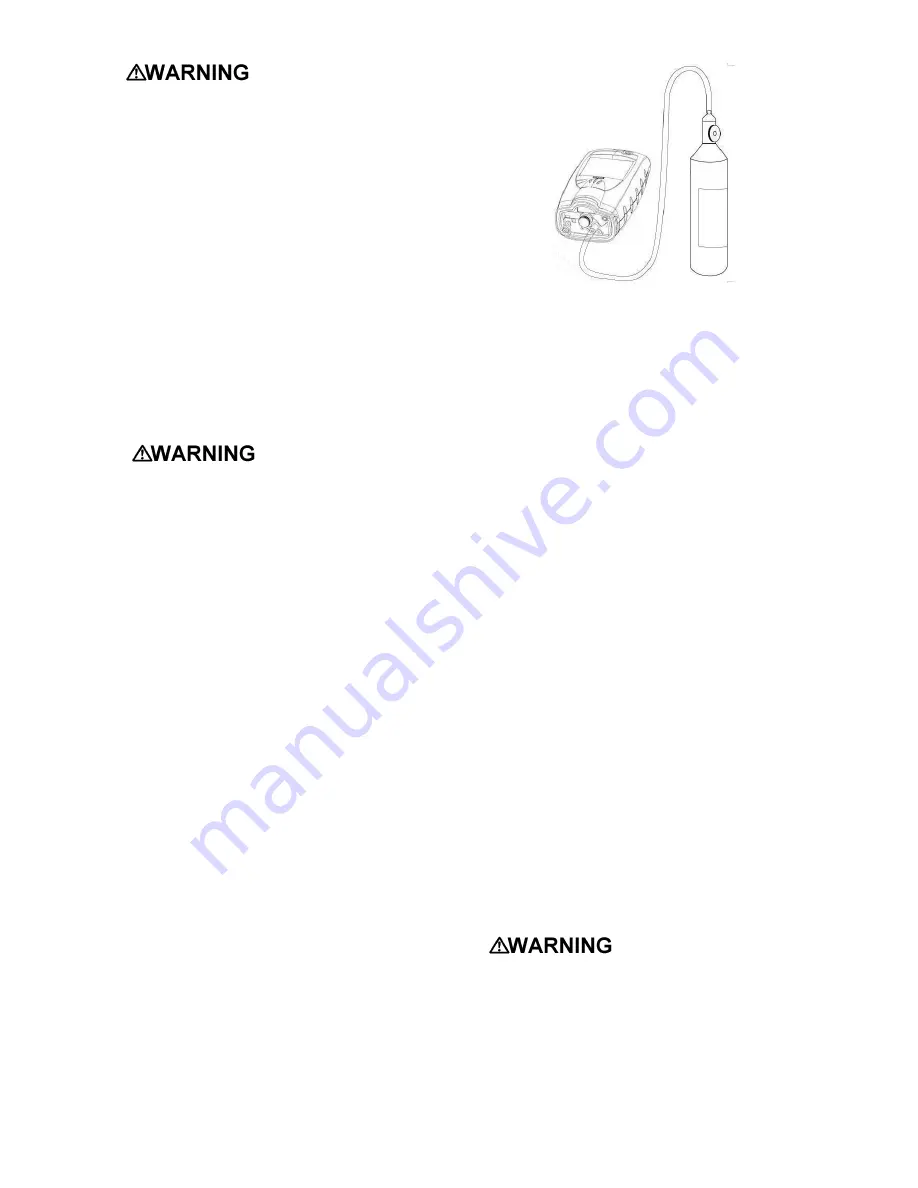
20
*
The Canadian
Standards Association (CSA) requires the
LEL sensor to be bump tested prior to
each day’s use with calibration gas
containing between 25% and 50% LEL.
The functional (bump) test procedure is
covered in section 4.1.
If exposure to fresh air yields an oxygen
reading of less than 20.7% or greater than
21.1% or a toxic or LEL sensor reading of
anything other than 0, then a Fresh Air/Zero
Calibration should be performed as described
in section 4.2.
If exposure to a known concentration
calibration gas (as described in section 4.1)
shows that LEL or toxic sensor readings are
not between 90%** and 120% of the value
given on the calibration gas cylinder, then the
Span Calibration should be performed as
described in section 4.3.
**
The Canadian
Standards Association (CSA) requires the
instrument to undergo calibration when
the displayed value during a bump test
fails to fall between 100% and 120% of the
expected value for the gas.
For Honeywell Analytics official
recommendations concerning calibration
frequency, see Appendix B.
4.1
Functional (Bump) testing
The accuracy of the MultiPro may be verified
at any time by a simple functional (bump) test.
To perform a functional (bump) test, do the
following:
1. Turn the MultiPro on and wait at least
three minutes to allow the readings to fully
stabilize. If any of the sensors have just
been replaced, the new sensor(s) must be
allowed to stabilize prior to use. See
section 5.6 for further details on sensor
stabilization requirements.
2. Make sure the instrument is located in
fresh air.
Figure 4.1 Bump Test / Span Calibration
set up
3. Verify that the current gas readings match
the concentrations present in fresh air.
The oxygen (O
2
) sensor should read
20.9% (+/-0.2% vol.). The readings for
the LEL sensor should be 0% LEL and
toxic sensors should read 0 or 0.0 parts-
per-million (PPM) in fresh air. If the
readings deviate from the expected levels
in a fresh air environment, proceed to
section 4.2 and perform the fresh air
calibration adjustment then proceed to
step 4.
4. Attach the calibration adapter and connect
the calibration cylinder to the MultiPro as
shown in figure 4.1. Flow gas to the
sensors.
5. Wait for the readings to stabilize. (Forty-
five seconds to one minute is usually
sufficient.)
6. Note the readings. Toxic and LEL sensor
readings are considered accurate in a
bump test if they are between 90%* and
120% of the expected reading as given on
the calibration cylinder. If the readings are
considered accurate, then the instrument
may be used without further adjustment.
If toxic or LEL readings do not fall within
90%* and 120% of the expected reading
as given on the calibration cylinder, then
the readings are considered inaccurate. If
readings are considered inaccurate,
proceed to section 4.3 and perform the
span calibration.
*
The Canadian Standards
Association (CSA) requires the instrument
to undergo calibration when the displayed
value during a bump test fails to fall
between 100% and 120% of the expected
value for the gas.
Honeywell Analytics multi-calibration gas
mixtures contain approximately 18%
Содержание MultiPro
Страница 1: ......
















































